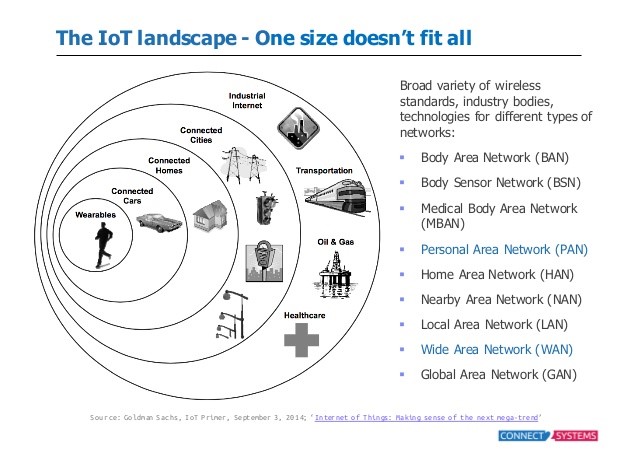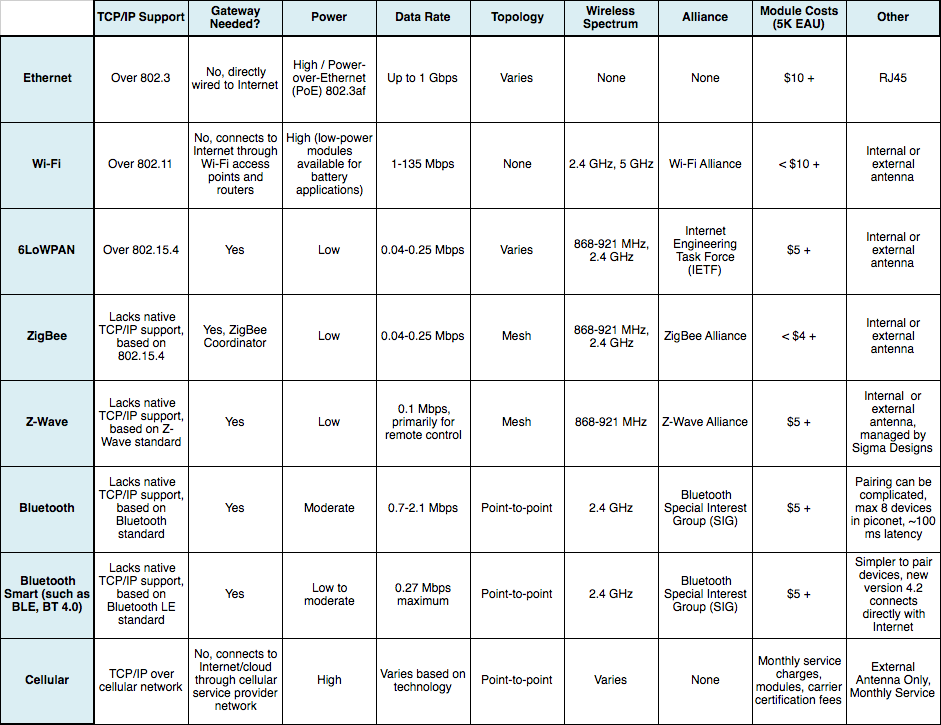-
What We Do
What we do
- Verticals
- Solutions
- Who We Are
The Internet of Things (IoT) can be loosely defined as a network of small, low-power sensing devices that communicate information without direct human intervention. Each device is a “smart node” in the network and performs low-level signal processing to filter signals and reduce required bandwidth. The nodes securely communicate with a centralized “cloud” to store, process data and then directs actionable information to authorized users.


The selection of the right wireless access technology for your IoT development solutions project is critical.
Key is the balancing of several inter-related requirements i.e., power consumption, range and proximity, network topology, data rate and time-sensitivity, as well as device and network costs.
Let’s take a look at each of these aspects.
Will your devices be battery powered? Power consumption is one of your most important design considerations. Selecting the optimal wireless access technology impacts the initial cost of the device, as well as cost of ownership over operational life. Battery operated devices must conserve energy to minimize battery replacement/recharge cycles, which in turn limits the amount of data they can transmit/receive. Energy harvesting technology is immature and expensive with few devices available, so selecting the right wireless technology is critical.
Device transmission frequency, modulation scheme and transmission power are important design considerations. The frequency at which a device’s communicates affects its ability to penetrate building walls, as well as the overall distance the signal can travel. In general, lower frequencies penetrate walls and buildings better than higher frequencies while more dense modulation and a higher frequency results in a shorter range.
Personal Area Networks (wearable, consumer electronics, etc.), Smart Home (home automation, appliances, etc.), Smart Factory (process control, building automation etc.) and Smart City (street lighting, parking, waste management, etc.) applications each involve varying distances between devices and communication network.
Depending on the use case, the ability to penetrate obstacles vs. the requirement for line-of-sight is an important consideration.
How will the devices connect with one another to provide data or the ability to control the environment?
Will the devices talk with a central hub or directly to the user’s mobile device? Or, will every device talk to one another in a mesh configuration?
Many wireless technologies assume a relatively small number of edge devices in the network. Bluetooth classic operates in a point-to-point or point-to-multipoint master-slave relationship, where one master can communicate with up to 7 slaves. Bluetooth Low Energy (BLE) allows more devices, practically about 10 to 20.
Wi-Fi access points generally handle 30-40 active mobile users and potentially up to 4096 connections. 4G/LTE six sector base stations provide coverage to 10-15 thousand devices, though it may only support up to 1000 concurrent voice calls or 50-100 data users. Zigbee supports up to 65,000 nodes. Depending on the IoT software development use case the numbers of connected devices is a critical factor driving the technology.


(Table below compares some of the more popular technologies against important parameters)
How much data will be communicated between the device and user phone, cloud, or central hub?
The time sensitivity of collected data is a very important system design criterion. If the information exchange needs to occur in real-time, or near real-time, this will have an overriding influence on the preferred technology and power requirements, even if the message size is small. If data transmissions are mission critical the device may need to be connected at all times, i.e. process-control or medical wearable.
Other use cases have less stringent time sensitive requirements, i.e., a smart dumpster only reports when it becomes full, therefore it is feasible to turn off communication most of the time and only wake for a brief transmission. In contrast a self-service coffee maker in a high-volume cafeteria might need to report it is running low on ingredients rather promptly. When the data transfer is not time-sensitive, message size becomes less of an issue, as it can be stored and forwarded periodically even at low data rates. Know more about IoT engineering Services, contact us